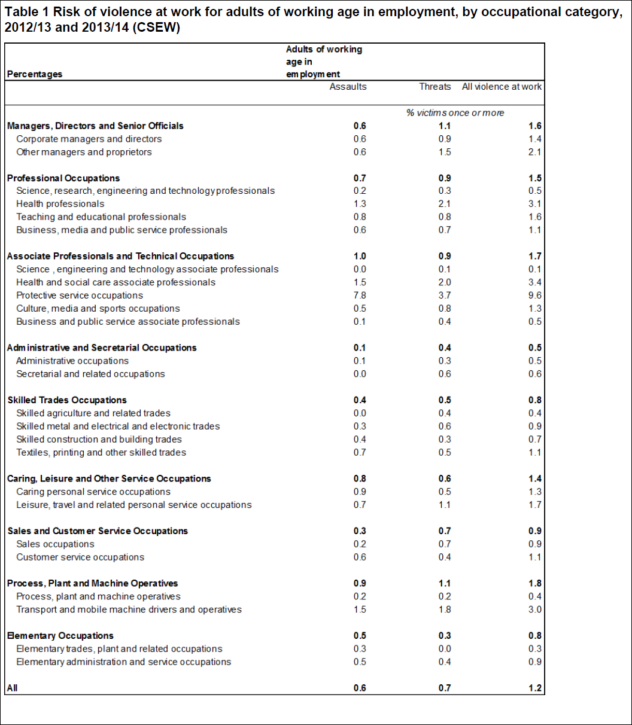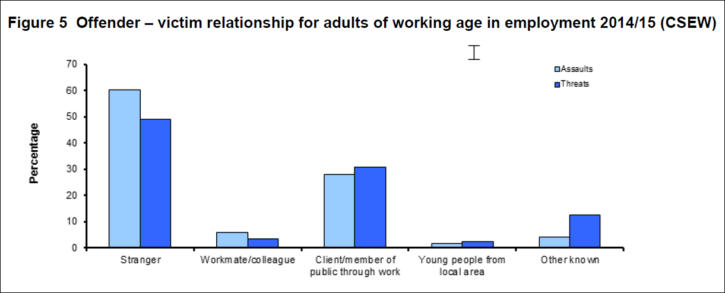569,000 incidents
There were more than half a million incidents of violence at work in 2014/15 according to a new (31 March 2016) report from the Health and Safety Executive.
The report
The report uses two main sources for violence at work: the annual Crime Survey for England and Wales (CSEW) and the statutory reporting system, The Reporting of Injuries, Diseases and Dangerous Occurrences Regulations (RIDDOR), which includes Scotland.
The RIDDOR reporting system records physical violence only and does not include threats or other verbal abuse. In addition employers are only required to report those injuries that result in over seven days off work. Non-fatal injuries reported under RIDDOR are known to be substantially under-reported.
RIDDOR reported 4,810 injuries to employees, where the ‘kind of accident’ was ‘physical assault/act of violence’ in Great Britain (England, Wales and Scotland) including two deaths. This represents 6.3% of all reported workplace injuries.
Key findings
Key findings from the report are set out below.
- Findings from the Crime Survey for England and Wales (CSEW) show that, the risk of being a victim of actual or threatened violence at work is similar in 2014/15 to the last few years, with an estimated 1.2 per cent of working adults the victims of one or more violent incidents at work.
- In 2014/15 285,000 adults of working age in employment experienced work related violence including threats and physical assault.
- There were estimated 569,000 incidents of violence at work according to the 2014/15 CSEW, comprising 308,000 assaults and 261,000 threats. This compares to an estimated 583,000 incidents in 2013/14. This change is not statistically significant.
- The 2014/15 CSEW found that 1.1% of women and 1.3% of men were victims of violence at work once or more during the year prior to their interview.
- It is estimated that 58% of victims reported one incident of work related violence whilst 20% experienced two incidents of work related violence and 21% experienced three or more incidents in 2014/15.
- Strangers were the offenders in 54% of cases of workplace violence. Among the 46% of incidents where the offender was known, the offenders were most likely to be clients or a member of the public known through work.
- The survey found 58% per cent of violence at work resulted in no physical injury, of the remaining 42% of cases, minor bruising or a black eye accounted for the majority of the injuries recorded.
Risk of violence by occupation
The report provides a breakdown of the risks of violence by occupation, reproduced below.

Readers may be interested to see that police and security staff (protective service occupations) are at the highest risk at 9.6% with risk levels considerably higher than the norm for health and social care associate professionals (3.4%) and health professionals (3.1%).
Offender-victim relationship
The chart below shows that over one quarter of violent incidents are committed by clients or members of the public encountered through work:

Conclusion
Although the report makes it clear that the incidence of violence at work has remained relatively stable over recent years; the number of threats and assaults still seem high to me — particularly when you take into account that so many more people now work from home and that much customer service work now takes place online or over the telephone.


